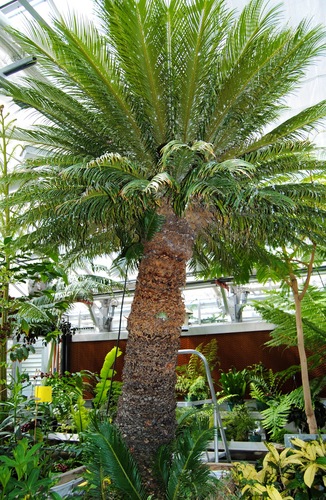King Sago Palm : Natural History
Cycas revoluta was the second species of cycad to be scientifically classified and named, being “discovered” in 1782. Native to the southern islands of Japan such as Kyushu Island, Yaku-shima, and Okinawa, the king sago palm often grows on hills and mountainsides, out in the open among shrubs and bushes. This is likely because it cannot compete with the larger trees in more crowded areas due to its relatively small size. While some cycad species can grow to over 50 feet, the king sago palm rarely grows over 5 meters tall. It is also a very slow growing species, taking at least 50 years to obtain this size (Though they may live at least twice this long.) The trunk is very stocky in appearance, growing about 40 centimeters wide. The trunk is also very rough in texture, resembling a scaly reptile (Further emphasizing its prehistoric origins).These scales are formed from old leaf bases that have accumulated over the years as the plant grows. The species is named for its leaves, which have very curled, revolute margins (meaning the leaf margins roll downward to the underside of the leaf). The leaves start out pale and pointed like hairs. As they grow, the spread out into a crown-like formation, darkening in color and widening out.

